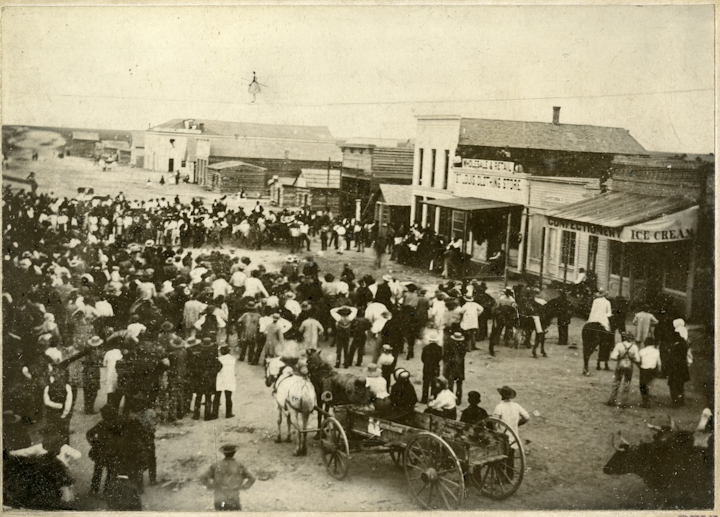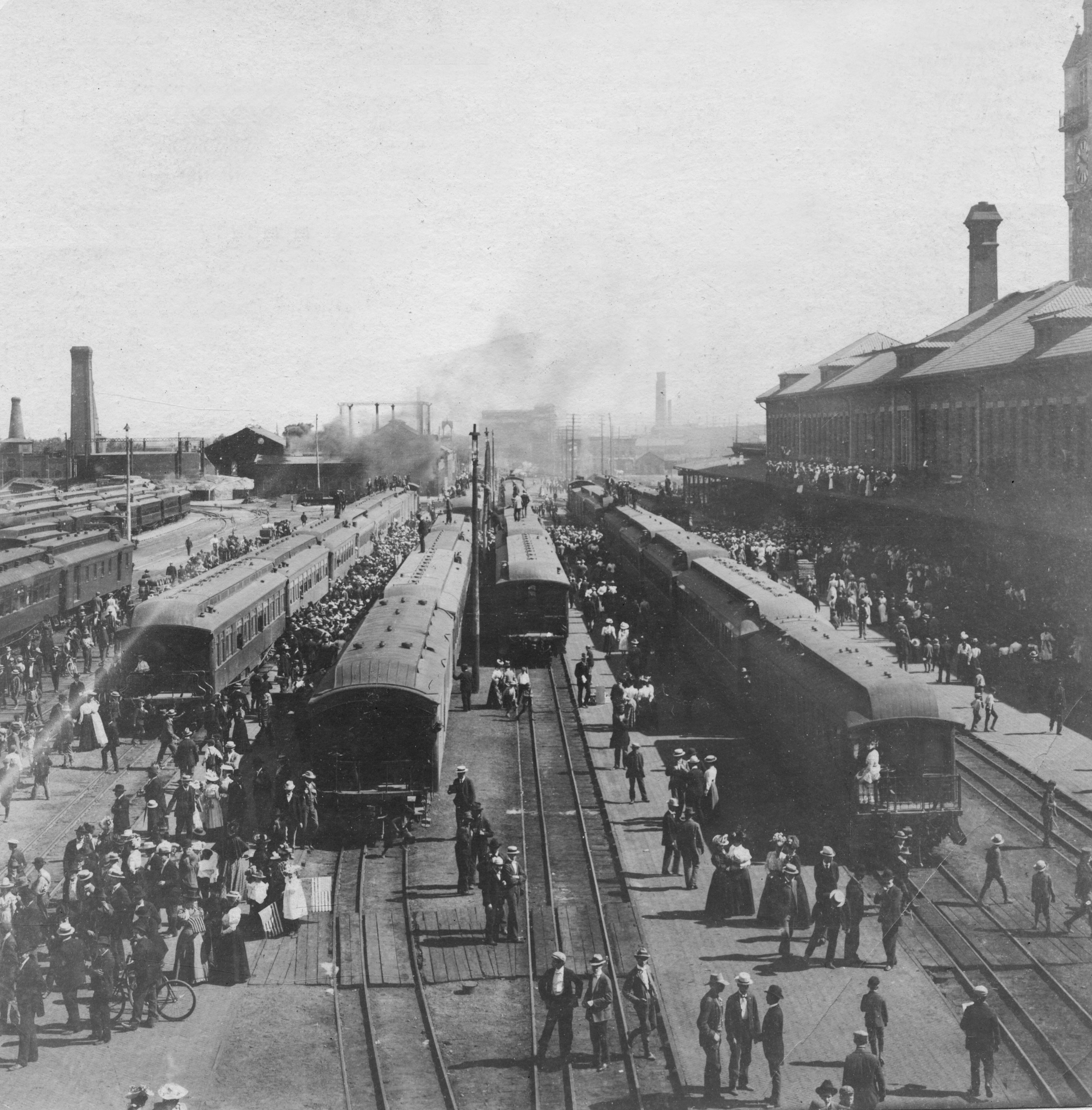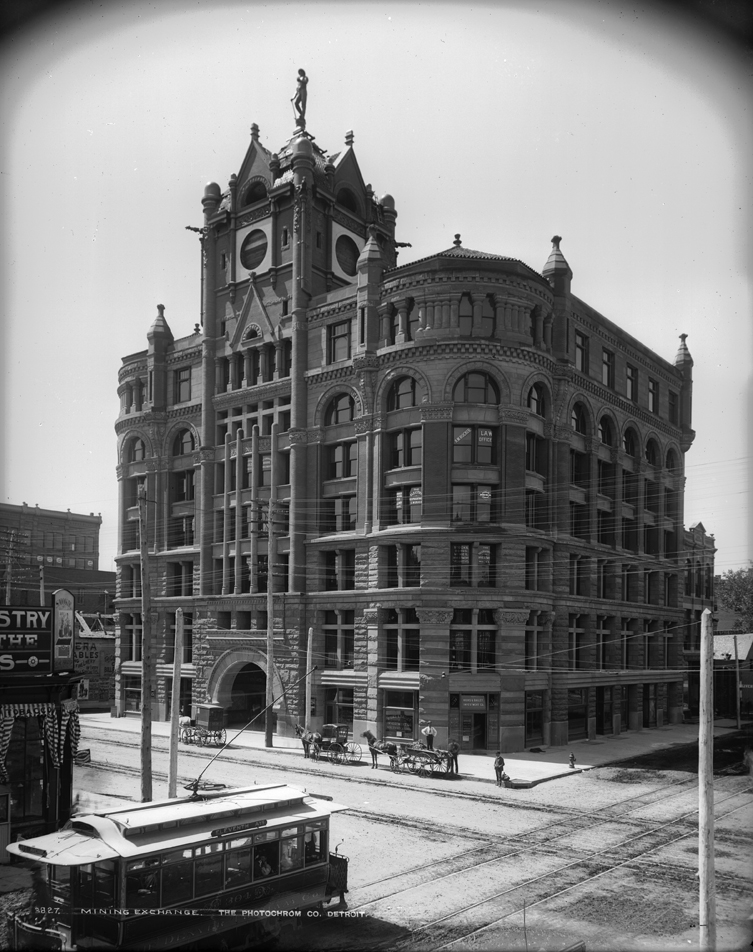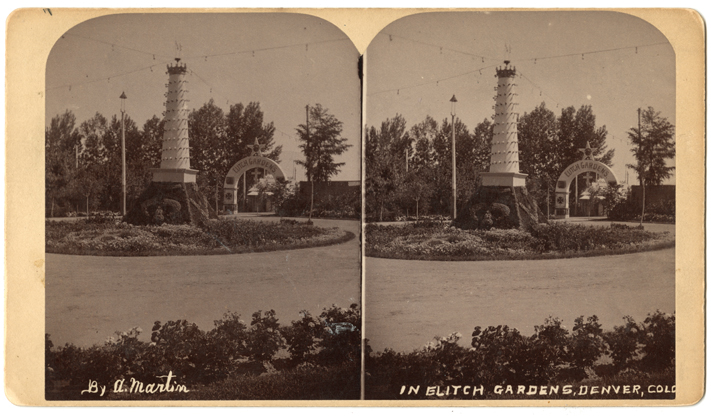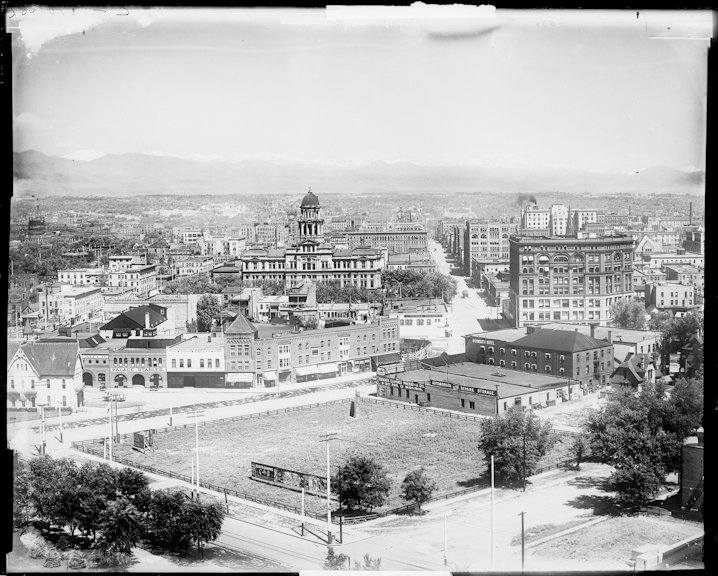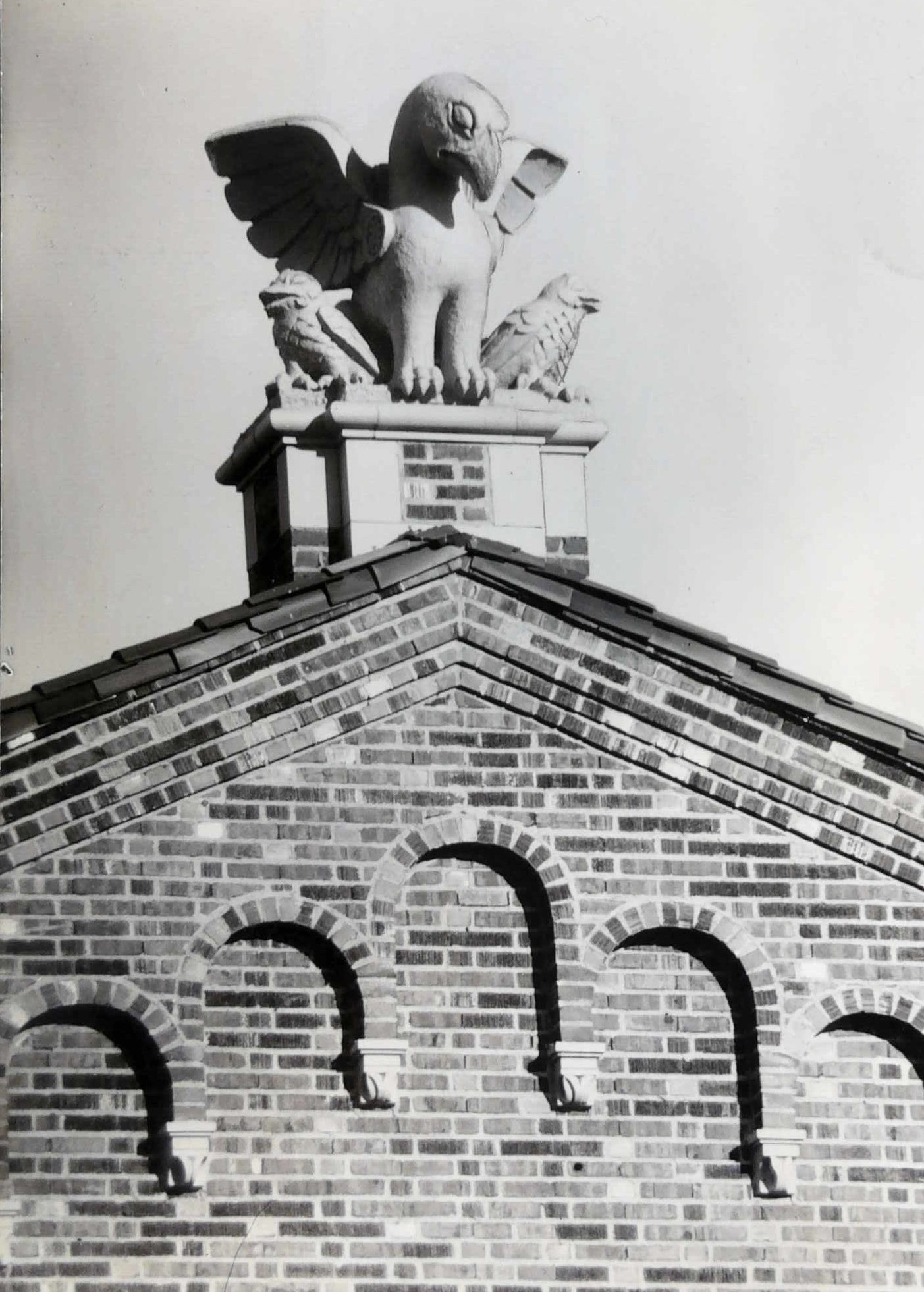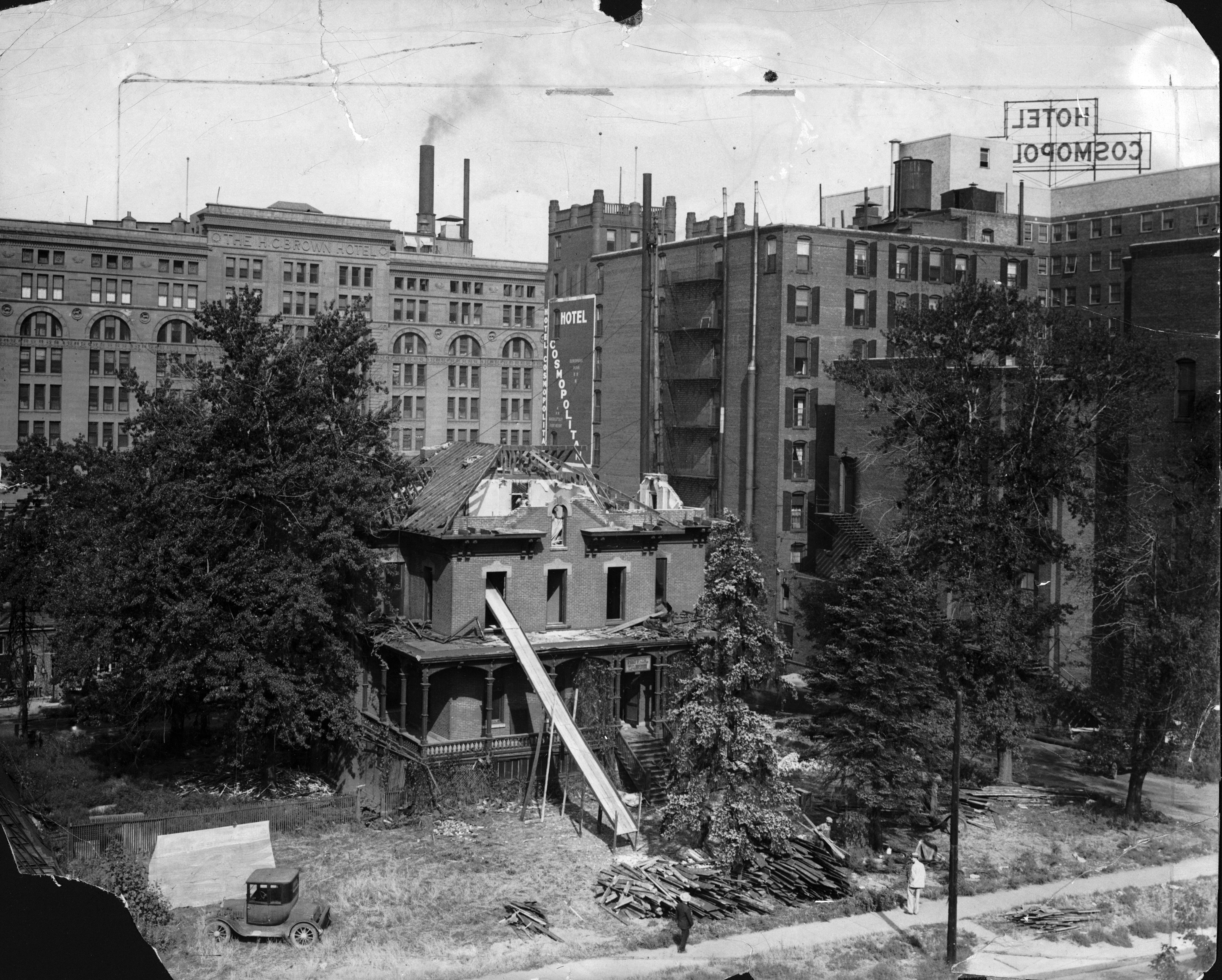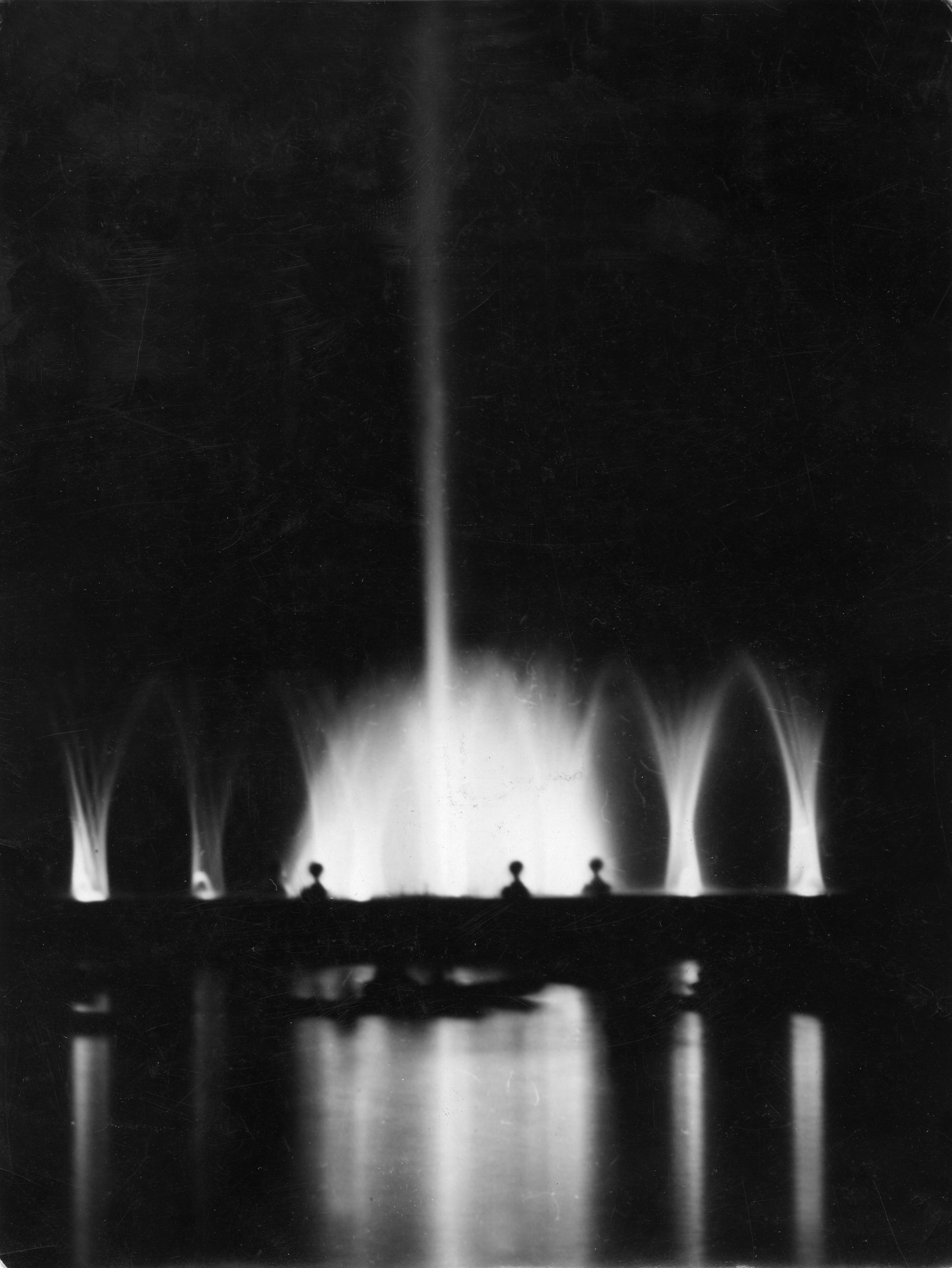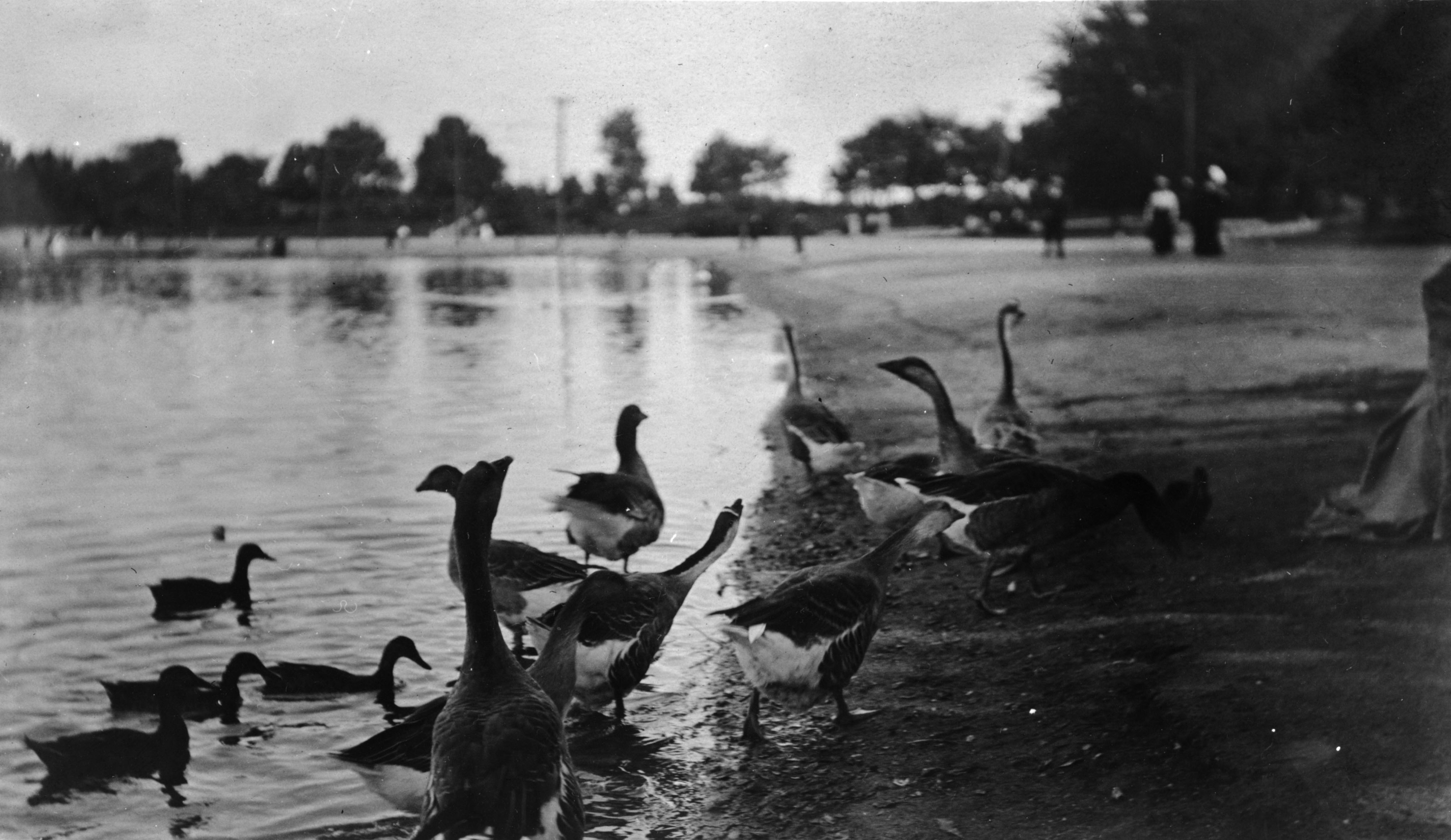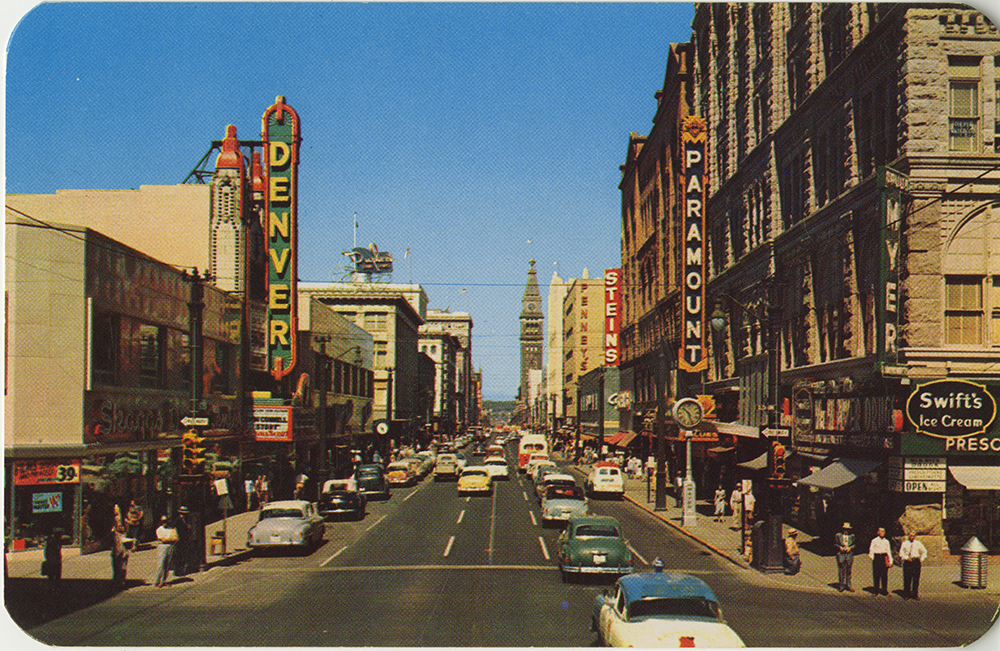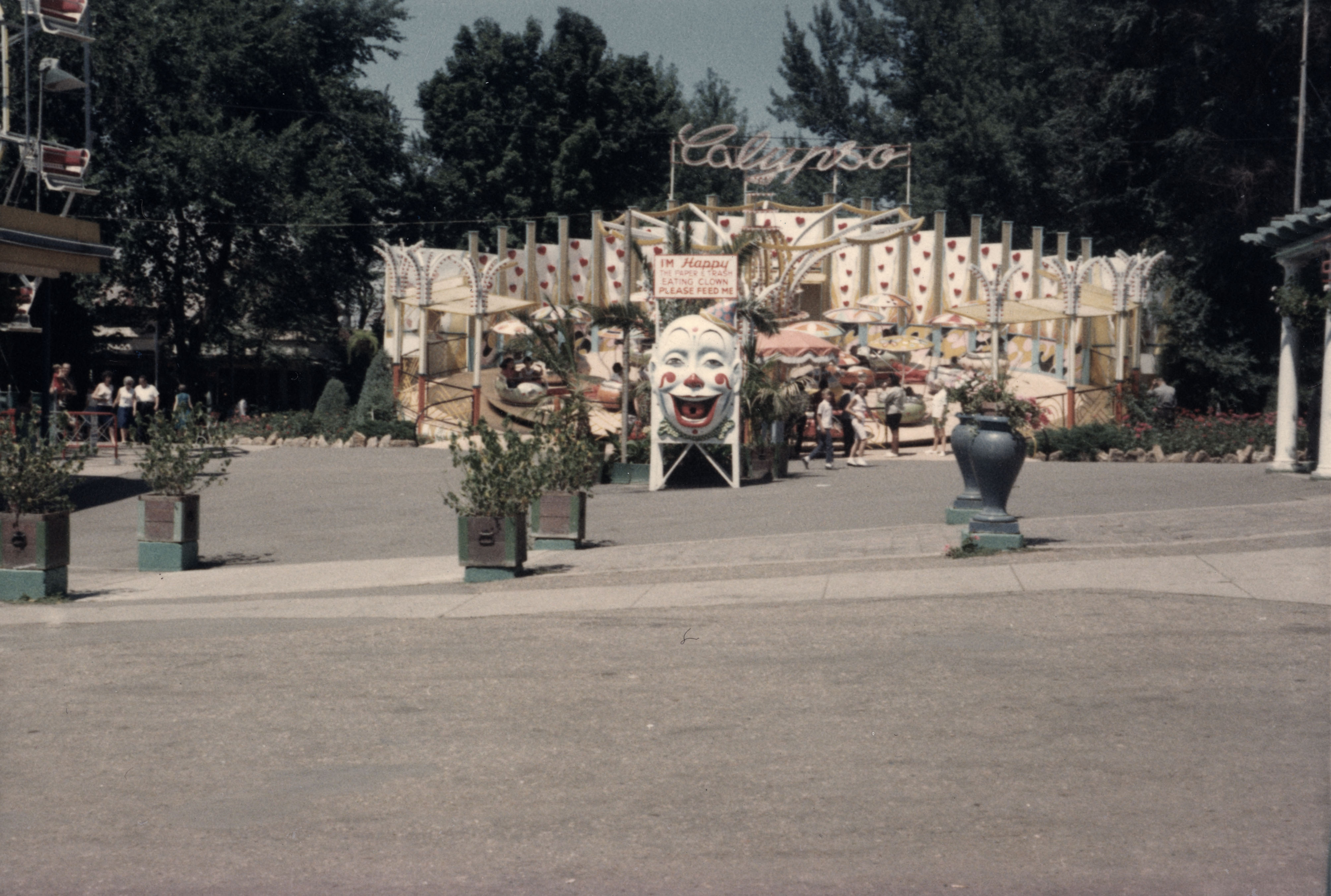
Story
Marveling at the Mile High City
November 22, 2022 marks the 164th birthday of our beloved Mile High City. To honor the occasion, Jori Johnson and Cody Robinson, part of History Colorado’s research team in the Stephen H. Hart Research Center, uncovered some marvelous images of the Mile High City that you just may have missed.
Denver was born on this day, November 22, in 1858. If you’re into collecting fun facts, here are some interesting tidbits about our state capital that you can use to impress your friends:
- Denver is actually 5280 feet above sea level, so the "Mile High City" is not a misnomer.
- The city is named after Kansas Territorial Governor James W. Denver.
- The Denver Performing Arts Complex is one of the largest in the United States, covering four blocks and twelve acres.
- Shakespeare’s Macbeth was performed in Denver, before a hospital or school was built in the city.
- The 16th Street Mall in Denver was designed by master architect I.M. Pei, who also created the glass pyramid outside of the Louvre in Paris.
- When Henry John Deutschendorf, Jr. began his music career, he decided to change his name to reflect his favorite state; we know him as John Denver.
We are so excited to celebrate this beautiful city through some amazing photos you may not have seen before from History Colorado’s collection. As we marvel at 164 years of Denver history, enjoy some views of the city throughout her life—and see if you can find any of these locations today!
Madame Carolista walking on a tightrope above Larimer Street in Denver, July 18, 1861
On the earliest side of photographic history of Denver, this event took place on Larimer Street between the New York Store and Graham’s Drug Store. The photographer, George D. Wakely, was born in England and was well known as a photographer in Denver from 1859–1864.
Union Station in the Late Nineteenth Century
Denver’s Union Station is one of the most iconic landmarks in the city, from all iterations of the facade. However, this view is one that not many today have seen. The “behind the scenes” view of what entering Denver looked like shows the amount of traffic we were already experiencing in the late 1800s! Imagine the likes of Oscar Wilde seeing this same view, as he made his way into Denver during his 1882 tour.
Mining Exchange Building
Downtown Denver during the late nineteenth century and early twentieth century had some spectacular buildings that permeated the landscape. This fantastical building was built in 1891 and torn down in 1963, but it clearly symbolized the creativity and money flowing through Denver’s downtown.
In Elitch Gardens
Every child wants to go to Elitch’s (if they’ve been lucky enough to see it on the highway), but the location of the current park is not its original location! On May 1, 1890, John and Mary Elitch opened the doors to Elitch Gardens and Theatre on 38th and Tennyson. The gardens and zoo contained some wonderful sights to see, such as the pagoda seen here or the carousel, still in operation today. Elitch Gardens became such a Denver staple that its slogan was once, “Not to see Elitch’s is not to see Denver.”
View of Denver from the Capitol
What a difference a hundred or so years makes in Denver’s history. This image was taken from the Colorado State Capitol Building’s dome overlooking the space that is now Civic Center Park. The image, taken by William Henry Jackson at the turn of the twentieth century, shows some notable buildings that are still around today. Can you make any out?
Keeping Watch Over South High School
The architectural gems in Denver extend beyond the beautiful buildings of downtown. Built in 1926, architecture firm Fisher & Fisher designed South High School on the south side of Washington Park and added exciting details such as a winged gargoyle, seen in this photo taken in 1928. In fact, the school newspaper is called The Gargoyle!
A Dwarf Among Giants
Parts of downtown Denver were once residential streets, which is hard to imagine today, with all the high-rise buildings. This image of the Tabor mansion, captured August 28, 1928, shows the massive change Denver was going through, even before the demolition days of the 1960s and 1970s. What a wonder this would have been to see!
City Park Fountain at Night
City Park by night is a magical view whilst out and about in Denver. The park was established in 1882 and is the largest urban park in the city. Today, tons of events happen at the park, including the conclusion of the Colfax City Marathon. This image, taken in the 1920s, shows a more whimsical side to the open space.
What would City Park be without the geese?
It’s not just people who think Denver is a magical place to be. If you don’t believe us, just look at these geese flocking to City Park in the 1920s. City Park remains a hotspot for birds, and birdwatchers flock to the park to check them out.
16th Street
Denver’s 16th Street has always been a vital thoroughfare of downtown. Even though it has changed frequently and is now the pedestrianized 16th Street Mall, there are still visible landmarks that make the street an iconic destination for tourists and locals alike. (The D&F Clock Tower is always a recognizable sentry of our beloved downtown.)
Calypso Clown, Elitch Gardens
Last but not least, something wild and fun to see in the streets of Denver. Elitch Gardens knows how to show off. What, at first glance, appears to be a large clown is, in fact, a trash can. It seems even trash receptacles like to be flashy in Denver.

